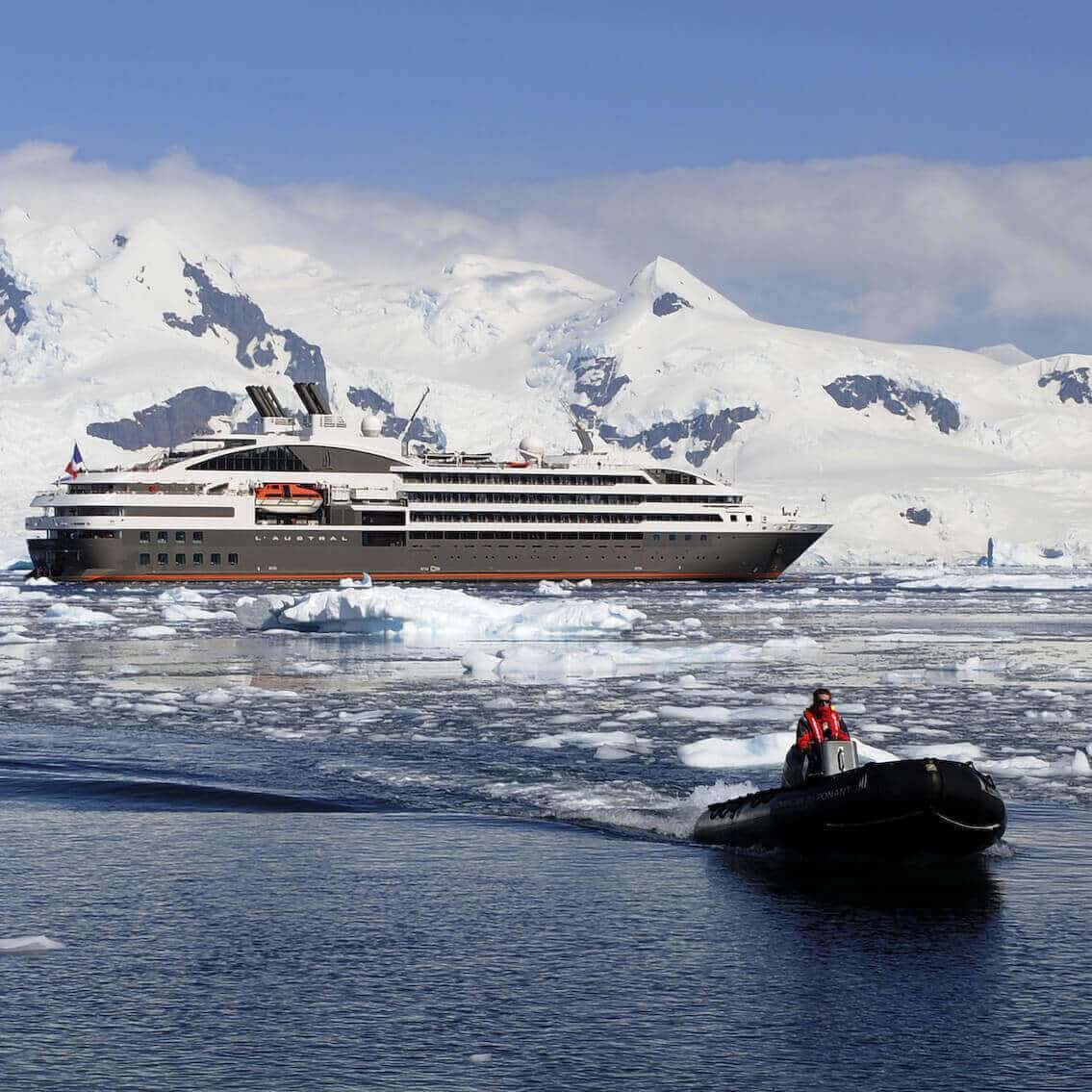Five routes to the Arctic
Who has not dreamed of someday reaching the ends of the Earth? Ever since the first explorers of the 16th century, the North Pole has been a constant source of fascination. Whether it’s about reaching the legendary Geographic North Pole or exploring the ice and shorelines of this pristine, unspoiled ocean… Here’s a rundown on our itineraries to the Arctic Circle.
Spitsbergen, a taste of the Frozen North
Approaching the North Pole along the chiselled coastline of Spitsbergen is an unforgettable experience. With its magnificent fjords and spectacular glaciers this island, part of the Norwegian archipelago of Svalbard is the Arctic in a nutshell. Located between the 74th and 81st parallels north, it is the last inhabited landmass before the sea ice begins.
Former whaling towns and nature reserves abounding in wildlife punctuate the voyage along the coast. On the edge of the Arctic ice, where seals, foxes and polar bears coexist, smaller boats – Zodiacs or kayaks – make great observation decks. You can then disembark to try « brevandring », the Norwegian technique of walking on ice.
Greenland, an island at the ends of the Earth
If there is a timeless land of wild beauty from which to venture to the planet’s most northerly latitudes, that land is Greenland. Its coastline is dotted with majestic glaciers, UNESCO World Heritage listed fjords, charming brightly coloured villages, and some of the largest icebergs in the Arctic,
Exploring this island, 80% of which is covered by ice sheet (the second largest glacial mass after Antarctica), also allows you to observe the world’s largest colonies of narwhals with their impressive twisted tusks, and that’s without mentioning the experience it offers of discovering and exploring the ancestral culture of the Inuit hunter-fishermen communities, particularly in the Scoresby Sound area of the east coast region, which is home to the northernmost village in Greenland.
Alaska, doorway to the Northwest Passage
It was between 1903 and 1906 that Norwegian Roald Amundsen’s expedition succeeded in linking the Atlantic and Pacific Oceans for the very first time from the north, an area completely preserved and untouched until that point. With sea ice in perpetual movement and snow-covered landscapes stretching as far as the eye can see, sailing the Northwest Passage is an experience all Arctic explorers dream of.
This adventure can be prolonged and extended by disembarking or embarking in Alaska… A former El dorado for gold diggers, Alaska is a land of legend. From the small harbours of Ketchikan, once the “Salmon capital of the World”, and Sitka, home to important collections of carved totem poles, to the gigantic Hubbard Glacier and Katmai National Park, with its impressive lava craters bordered by primary forest covered plains – a paradise for grizzlies – Alaska is a wild, untamed land with a rich ecosystem.
To the north, in the polar waters of the Bering Sea and the Aleutian Islands, where some of the volcanoes still smoke and steam, whales, dolphins, humpback whales and fur seals cavort and play.
Eastern Siberia and the Northeast Passage
Discovered in 1878, the Northeast Passage, known as the Northern Sea Route, links the Atlantic and Pacific Oceans at the north coast of Siberia. This itinerary starts at the Gulf of Anadyr and heads towards Cape Dezhnev before reaching Wrangel Island, a nature reserve listed as a UNESCO Heritage Site, home to reindeers, snowy owls, sea lions and polar bears.
From the Laptev Sea to the Barents Sea via the islands of Severnaya Zemlya (Northern Land) and their nomadic Nenets tribe inhabitants, breathtaking discoveries mark the route through these seas, which are some of the coldest in the world: sea ice, walrus colonies, hot springs, a site featuring whale mandibles aligned in rows…
Barneo, last stop before the North Pole
Adventurers keen to brave extreme conditions can try to reserve one of the 60 sought-after spots in the Russian base camp Barneo, 60 km from the Pole on the 89th parallel. It can be reached by plane from Spitsbergen in Norway. There are a variety of ways for visitors to continue from the base camp: snowmobile, dog sleds and a several-day-long trek on skis, with bivouacs on the sea ice. And all in temperatures of -30°C !
Whatever your route to the North Pole, extreme sensations and emotions are sure to be part of the package!

Experience a true Arctic adventure!
Alaska, Greenland, Spitsbergen, the Geographic North Pole… Reach the Far North with PONANT



